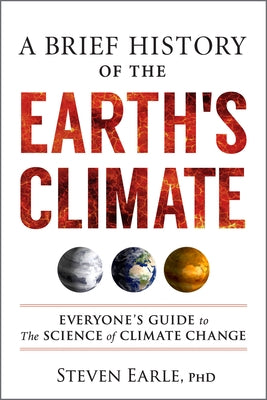Description
-- JAMES HANSEN, director, Climate Science, Awareness and Solutions, Columbia University Earth Institute
What's natural, what's caused by humans, and why climate change is a disaster for all
A Brief History of the Earth's Climate is an accessible myth-busting guide to the natural evolution of the Earth's climate over 4.6 billion years, and how and why human-caused global warming and climate change is different and much more dangerous.
Richly illustrated chapters cover the major historical climate change processes including evolution of the sun, plate motions and continental collisions, volcanic eruptions, changes to major ocean currents, Earth's orbital variations, sunspot variations, and short-term ocean current cycles. As well as recent human-induced climate change and an overview of the implications of the COVID pandemic for climate change. Content includes:
- Understanding natural geological processes that shaped the climate
- How human impacts are now rapidly changing the climate
- Tipping points and the unfolding climate crisis
- What we can do to limit the damage to the planet and ecosystems
- Countering climate myths peddled by climate change science deniers.
A Brief History of the Earth's Climate is essential reading for everyone who is looking to understand what drives climate change, counter skeptics and deniers, and take action on the climate emergency.
Author: Steven Earle
Publisher: New Society Publishers
Published: 10/12/2021
Pages: 208
Binding Type: Paperback
Weight: 0.70lbs
Size: 8.90h x 5.91w x 0.55d
ISBN13: 9780865719590
ISBN10: 0865719594
BISAC Categories:
- Science | Global Warming & Climate Change
- Science | Earth Sciences | Meteorology & Climatology
- Nature | Environmental Conservation & Protection | General
About the Author
Steven Earle, PhD, has worked in the Earth Sciences, has developed and taught university Earth Science courses for almost four decades, and is author of the widely used university textbook, Physical Geology, now in its second edition. He participates in climate change research and community engagement with climate change solutions including low-carbon transport initiatives, heating systems, and land stewardship. He lives with his family on a sustainable farm on Gabriola Island, Canada.

